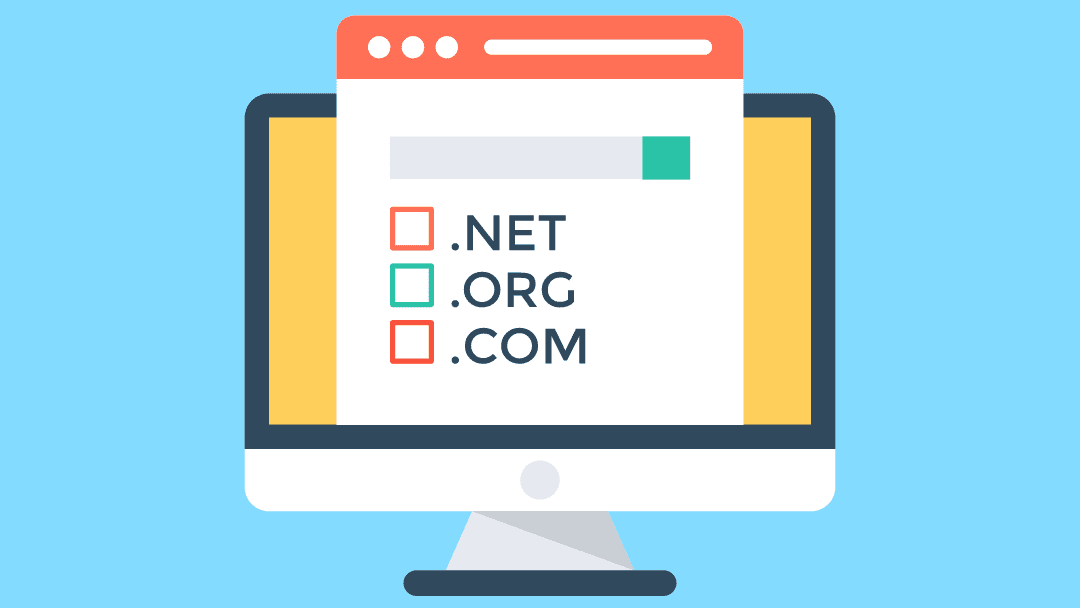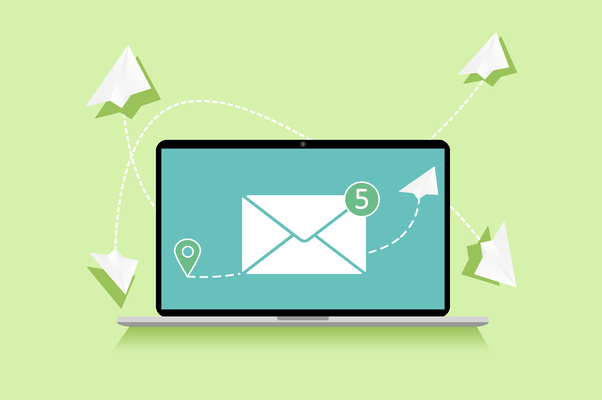DMARC record, which stands for Domain-based Message Authentication, Reporting, and Conformance, is an email authentication and reporting protocol. DMARC builds on the existing SPF (Sender Policy Framework) and DKIM (DomainKeys Identified Mail) authentication mechanisms, providing an additional layer of security and control for email senders.
Important update from Google and Yahoo: starting from February 1 2024
Google and Yahoo made a big announcement together. They’re teaming up to fight against online fraud, like phishing and identity theft. Starting from February 1 2024 any company sending more than 5,000 electronic messages via or to these platforms will be required to adopt DMARC authentication technology. This is because they want people to feel safer when using their services, and they want to make the internet a safer place for everyone.
This announcement means big things for businesses. If they don’t do what Google and Yahoo say, their emails might not go through. This could make it really tough to talk to customers and partners. But if businesses use DMARC, they’re not just following rules; they’re protecting important information and their reputation.
The deadline in February 2024 isn’t just a deadline – it’s a chance for businesses to make their online security stronger. DMARC helps them meet the standards set by Google and Yahoo and makes people trust them more online. Keeping emails safe isn’t something businesses can ignore; it’s very important. With this announcement, more businesses will probably start using DMARC, making it harder for those who don’t to get their emails delivered.
Here are the key aspects of DMARC:
Authentication Protocols Integration:
DMARC is designed to work alongside SPF and DKIM. It allows domain owners to publish policies for SPF and DKIM, specifying how email from their domain should be authenticated.
DMARC Record in DNS:
To implement DMARC, domain owners publish a DMARC policy in their DNS records. The DMARC policy is stored in a TXT (text) record and specifies how receivers should handle emails that fail authentication checks.
DMARC Policy Elements:
DMARC policies include the following key elements:
p (Policy): Specifies the policy to be applied when an email fails authentication. It can be set to “none” (take no action), “quarantine” (mark as spam or move to a spam folder), or “reject” (reject the email outright).
sp (Subdomain Policy): Allows domain owners to specify a different policy for subdomains.
rua (Reporting URI for Aggregate reports): Specifies the URI (Uniform Resource Identifier) where aggregate reports about email authentication results should be sent.
ruf (Reporting URI for Forensic reports): Specifies the URI where forensic reports (detailed information about individual email failures) should be sent.

Alignment Checks:
DMARC introduces the concept of alignment checks, which helps ensure that the domain in the DKIM signature aligns with the “From” header domain and that the domain in the SPF record aligns with the “From” header domain. Alignment enhances the security of email authentication.
Reporting Mechanism:
One of the significant features of DMARC is the reporting mechanism. DMARC provides detailed reports to domain owners about email authentication results. These reports include information about the volume of emails that passed or failed authentication, details about sending sources, and more. These reports aid in monitoring and troubleshooting email authentication.
Gradual Implementation:
You can implement DMARC in a gradual manner. A domain owner can start with a “none” policy to monitor authentication results without taking immediate action. Once confident in the results, you can ahjust the policy to “quarantine” or “reject.”
Enhanced Email Security:
By implementing DMARC, domain owners gain better control over their email channels, reduce the risk of phishing attacks, and enhance the overall security of their email communications. DMARC helps protect against email spoofing and the use of unauthorized sources to send emails on behalf of a domain.
Industry Adoption:
DMARC has gained widespread adoption and supported by major email service providers. Many organizations and email providers use DMARC as part of their email authentication strategy. Again, remember that ttarting from February 1 2024 any company sending more than 5,000 electronic messages via or to Google and Yahoo will be required to adopt DMARC authentication technology.
Why you must have it.
Implementing DMARC (Domain-based Message Authentication, Reporting, and Conformance) is beneficial for several reasons, and it provides important security and management advantages for your email domain. Here are key reasons why you should consider having DMARC:
Enhanced Email Security:
DMARC helps enhance the security of your email communication by preventing unauthorized parties from sending emails using your domain. It protects against email spoofing, phishing attacks, and other malicious activities that involve forging the sender’s address.
Combatting Phishing Attacks:
Phishing attacks often rely on sending emails that appear to come from trusted sources. DMARC helps verify the authenticity of email senders, making it more difficult for attackers to impersonate your domain and trick recipients into revealing sensitive information.
Reducing Spoofed Emails:
DMARC works in conjunction with SPF (Sender Policy Framework) and DKIM (DomainKeys Identified Mail) to provide a comprehensive authentication solution. This reduces the chances of spoofed emails, as it validates both the sending server’s IP address (SPF) and the integrity of the email content (DKIM).
Policy Enforcement:
DMARC allows you to specify policies for how receiving mail servers should handle emails that fail authentication checks. You can set policies to monitor, quarantine, or reject such emails. This gives you control over how you represent your domain in the email ecosystem and allows you to actively enforce your security policies.
Visibility and Reporting:
DMARC provides detailed reports about the authentication status of emails sent on behalf of your domain. These reports include information about the volume of emails that passed or failed authentication, the sources of these emails, and details about authentication methods used. This visibility helps you monitor your email domain’s security and troubleshoot any issues.
Brand Protection:
Protecting your brand’s reputation is crucial. By implementing DMARC, you reduce the risk of your domain being associated with phishing or spam activities. This helps maintain trust with your customers and partners.
Compliance with Email Standards:
DMARC has become a widely adopted standard for email authentication. Many email service providers and organizations use DMARC as part of their email security measures. Implementing DMARC aligns your practices with industry standards and best practices.
Gradual Implementation:
DMARC allows for a gradual implementation approach. You can start with a “none” policy to monitor authentication results without taking immediate action. Once you are confident in the results, you can adjust the policy to “quarantine” or “reject.”

Industry Support:
Major email service providers and organizations actively support DMARC. By implementing DMARC, you align your email authentication practices with the broader industry, ensuring compatibility and cooperation with other email senders and receivers.
In summary, having DMARC in place is essential for securing your email domain, protecting against phishing, and maintaining the integrity of your brand. It provides control over how anyone uses your domain in email communications and offers visibility into the authentication status of your emails.
Understanding the importance of DMARC compliance is really important for any organization. Let’s look at what could happen if you ignore DMARC in your email security strategy:
Without DMARC:
1. Anyone can pretend to be you in emails.
2. You can’t see where your emails are going outside of your organization.
3. Hackers could use emails from inside your company to trick people.
4. Your partners, suppliers, and customers could have their identities stolen.
5. There’s a risk of losing money or leaking important data.
6. Your company’s reputation could take a hit.
With DMARC:
1. You have complete control and visibility over where your emails are going.
2. You can decide who can send emails using your domain.
3. It protects your partners, suppliers, and customers from identity theft.
4. It reduces the risk of someone inside your company being used in a scam.
5. It’s a step towards making your email security better.
If you want to start improving your email security, Nomios can help. They use top-notch tools and methods to make sure your email setup follows the best practices and keeps you safe from online threats.
How to check DMARC record?
To check the DMARC (Domain-based Message Authentication, Reporting, and Conformance) record for a domain, you can follow these steps:
Manual DNS Query:
You can perform a manual DNS query to retrieve the DMARC record for a domain using the nslookup or dig command in the command prompt or terminal.
For example, using nslookup: -type=txt _dmarc.example.com
Or using dig: +short txt _dmarc.example.com
Replace “example.com” with the actual domain you want to check. Look for the TXT record that contains DMARC information.
Online DMARC Checkers:
Several online tools allow you to check DMARC records. You can enter the domain, and the tool will retrieve and display the DMARC record for you. Some popular online DMARC checkers include:
Email Header Inspection:
If you have received an email from the domain in question, you can inspect the email headers to find the DMARC information. Look for the “DMARC-Signature” or “DMARC-Results” field in the email header. This field may indicate the DMARC policy applied to the email.
DNS Record Structure:
DMARC records are typically published in the DNS with the subdomain “_dmarc” and the domain name. The record is in the form of _dmarc.example.com. You need to look up the TXT record for this structure to get the DMARC policy.
Keep in mind that DNS changes, including DMARC record updates, may take some time to propagate across the Internet. If you’ve recently made changes to the DMARC record for a domain, allow some time for these changes to take effect.








